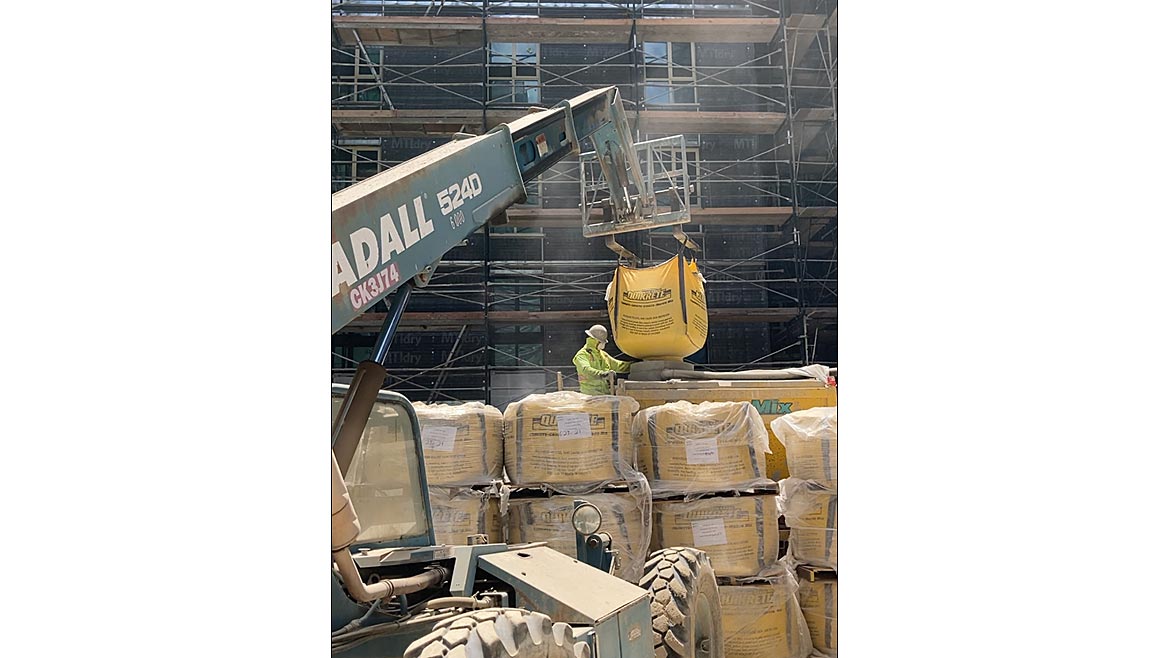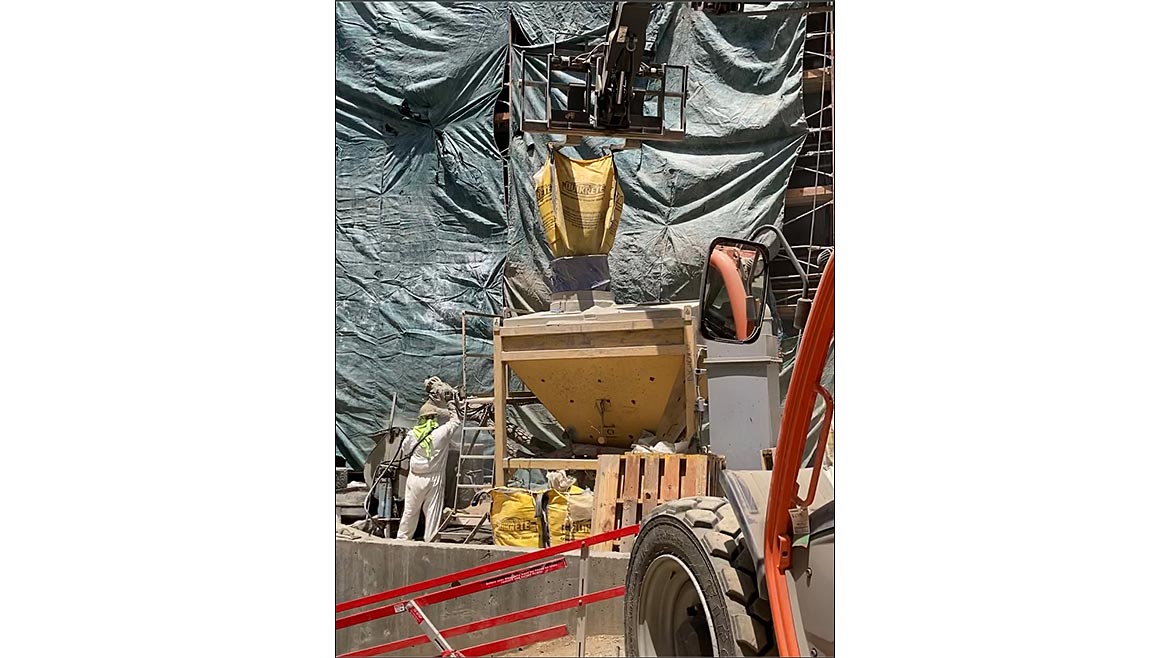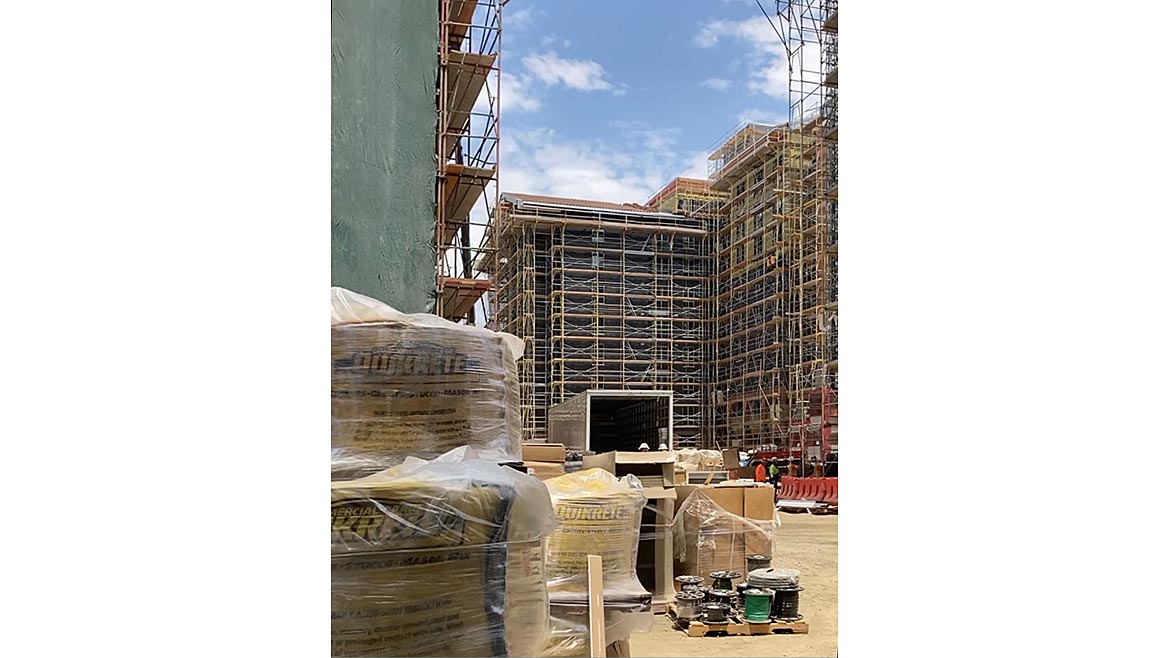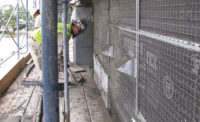In the next 10 years an estimated 46 million people will reach college age. At the same time enrollment in post-secondary schools will increase an average of 1.1 percent annually over the next 10 years, resulting in demand for student housing continuing to increase according to research conducted by the National Multifamily Housing Council. So, it should come as no surprise colleges and universities, especially those in metropolitan settings with increasingly compressed space, are building taller, multiple-level accommodations to house these scholars.
To accommodate growing demand, the University of California, Los Angeles commenced a project to construct additional student housing in a dense, residential area. Nearby homes and apartments in this campus-adjacent neighborhood illustrated the importance of precise planning, use of best practices, and cooperation for overall project success.
Building in these areas creates unique challenges, especially with shrinking jobsites. In fact, it’s not uncommon for the jobsite to be only slightly larger than the development footprint itself. This increasingly frequent situation creates a variety of challenges for all involved with a project, but especially stucco contractors who manage the delivery, storage, staging and mixing of materials. With a need to stay on schedule and on budget, contactors should consider demonstrated best practices for multi-floor developments on tight jobsites. One such practice that allows for navigation of congested job sites is the use of a silo system. While this article focuses on pre-blended stucco, the use of a silo system for mortar, shotcrete, or concrete offers similar advantages.
When a reduced work area makes field mixing challenging, traditional and pumpable pre-blended stucco, available in 80-pound bags and 3,000-pound bulk bags, is ideal for managing tight jobsites. Computer batched pre-blended stucco means contractors only deal with one material instead of multiple materials—aggregates and cement—required to field mix stucco, with the added benefits of consistent quality and performance. The result is fewer deliveries, less storage and staging space, reduced labor, and decreased material waste. The same advantages can be found with other products when utilizing a silo system.

Time is Money
The first challenge a contractor must overcome in urban construction is getting materials to a jobsite in a timely manner. Even the most experienced truck driver can become frustrated by the need to navigate narrow streets lined with cars. The solution requires working with dispatch and/or distributors, scouting a route in advance, and developing a schedule that considers possible delays like local noise ordinances to ensure on time deliveries.
While it may seem obvious, minimizing the number of deliveries to a jobsite pays bid dividends. Pre-blended stucco coming from one plant on one truck rather than aggregates and cement coming from multiple locations on multiple trucks easily reduces the number of deliveries. Eliminating project delays caused when one of the materials for field mixing stucco is late to the jobsite is another advantage of pre-blended stucco. Additionally, inclement weather can be a curse to on-time deliveries of aggregates and cement exposed to weather but has little impact on pre-blended stucco protected in covered facilities. The net result is that with a pre-blended solution, contractors only need to be concerned with one delivery rather than multiple deliveries for the same amount of end product.

The same volume logic applies once materials arrive on a jobsite, especially those locations lacking “usable” storage space such as parking garages and decks. Often contractors are assigned a specific storage spot and required to manage materials within that space during a project. This scenario can result in costly short loads, more frequent deliveries, and the use of expensive short-bed trucks.
Instead, contractors can take advantage of storing stackable pre-blended stucco bags rather than three ever-changing piles of aggregates and cement. By stacking pre-blended stucco access to ready-to-use stucco is easier and faster than dealing with multiple materials, possibly exposed to the elements, that still need to be mixed by hand. You also avoid environmental restrictions like managing run-off of aggregates and cement into stormwater systems.

Silos are the Solution
Silos available in various sizes and styles and designed to accommodate 3,000-pound bulk bags of pre-blended stucco and can fit most any jobsite configuration. In some instances, to expedite a project, multiple silo systems can be deployed on one jobsite. Gravity style silos and auger style silos are common options that only require an 8-foot by 8-foot area maximum. By comparison, the footprint of a 10-yard sand pile with related cement materials will be two to three times larger.
In addition to requiring less space, silo systems also reduce labor costs. Silos can commonly hold up to 15,000-pounds of stucco, which will cover approximately 4,000 square feet of scratch coat without stopping to reload. Field mixing that much stucco significantly increases time and labor.
A gravity style silo is operated by sliding open a gate under the silo, so it discharges the pre-blended stucco directly into the mixer while adding the water. The pull handle rotates to keep the operator ‘up wind’ from any dust, but the silos can be customized with dust abatement attachments. In addition to the traditional 15,000-pound versions, a ‘Ten Bagger’ that holds 30,000-pounds of material can be found in some markets.
There are also auger-style silo systems available depending on the market, and they all discharge the material to the outside of the silo allowing for the use of larger pump and mixer equipment. The system consists of an auger screw delivery driven by a gasoline motor, which is like the pump and mixing equipment, so using and maintaining in tandem is convenient.
Smaller, lower-profile silo systems designed to hold 3,000 to 12,000 pounds of pre-blended stucco are available for use in highly restrictive work areas. These systems are also lighter, so staging them in higher, remote locations is possible. Regardless of the silo system, many contractors load the silo in the morning when they arrive and during lunch break and that keeps their crew busy all day. The use of a silo system isn’t even an option when field mixing stucco.
Many of these best practices were utilized in the UCLA project. From a multiple silo system with pre-blended pump grade stucco from QUIKRETE to frequent communication with production, distribution, plant dispatchers and the on-site contractors. In addition to saving space on the jobsite, silo systems contribute to reduced waste or unused product needing to be removed when the job is completed.
While tight urban jobsites make it a more challenging endeavor, projects succeed when materials are on-time, effectively stored, quickly staged, and efficiently mixed. Pre-blended stucco delivers on all those fronts along with consistent quality and performance not matched by field mixed alternatives. Not to mention, jobsite cleanup requires little labor and any unused pre-blended stucco can be reclaimed for a future project while lost aggregates and cement simply become lost profits.





Report Abusive Comment